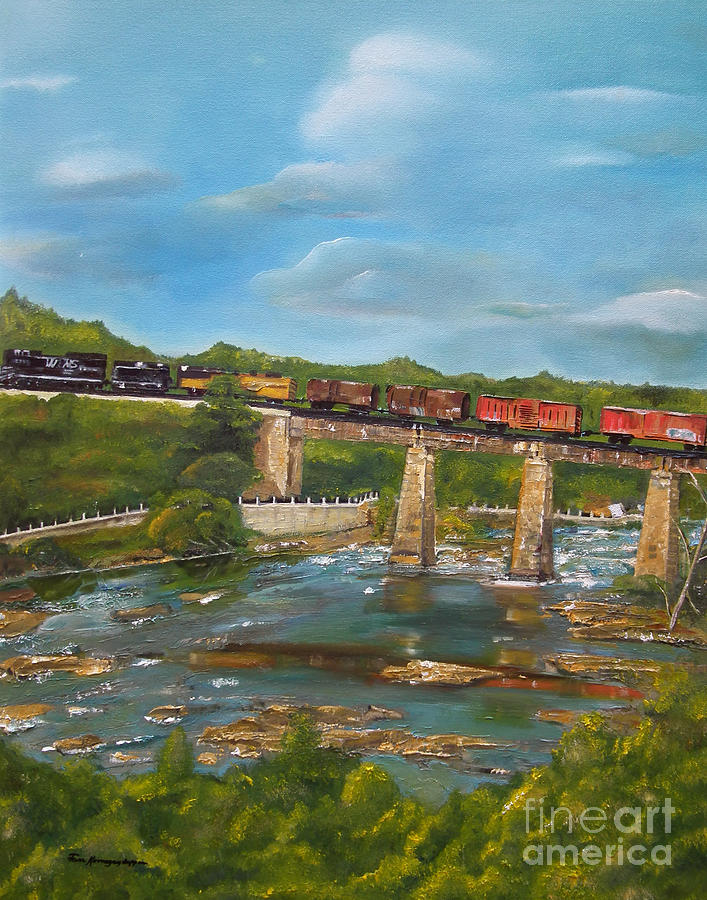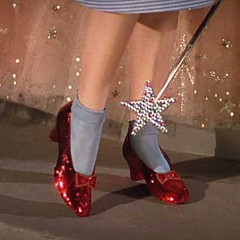
Chattahoochee Choo Choo - Train on Trestle - Columbus GA

by Jan Dappen
Buy the Original Painting
Price
$700
Dimensions
26.000 x 30.000 inches
This original painting is currently for sale. At the present time, originals are not offered for sale through the Jan Dappen - Artist Website secure checkout system. Please contact the artist directly to inquire about purchasing this original.
Click here to contact the artist.
Title
Chattahoochee Choo Choo - Train on Trestle - Columbus GA
Artist
Jan Dappen
Medium
Painting - Oil On Canvas
Description
This is an original oil painting on a 26 X 30, l.5 inch wrap around canvas. The original can be framed as is or in a frame.Watermark will not appear on the original or any prints produced. Contact the artist to purchase the original. Thanks to my niece, Beth Odom, for taking a reference photo for me from her place of work on the Chattahoochee. The train in the picture is crossing from Alabama to Columbus, GA, my hometown. This is an important place with special memories for my family. My great grandmother was half Creek Indian, lived in Phenix City on the other side of the river from my home, worked most her life in the old mill right on the river in Columbus, My mother lost her mother early and spent much time with her grandmother. While her grandmother worked, she would play along the banks with her Brother Willie. They would swing out on the vines over the river and climb along the dangerous rocks. Today, this Columbus and Phenix City has renovated the Uptown area and provided walking trails along the river, "The River walk". They also have a new White water adventures and a zipline across the "Hootch". If you visit Columbus, you should definitely take in the River Walk and the New Infantry Museum.
Alabama Division train 137 of the Norfolk Southern Railroad crosses the Chattahoochee River as it departs Columbus, GA, bound for Birmingham, AL. Over the past 170 years Georgia's railway builders have used a variety of structures to carry heavy trains across streams and roadways. Earthen fills with culverts are adequate for many small watercourses, but often the job requires a wooden trestle, a masonry arch, or a steel bridge. Here's a small sampling of the rail spans found in the Peach State:Because the railroad-building period coincided with the steamboat era, it was often necessary to construct drawbridges where rails crossed rivers. Steamboats traveled hundreds of miles of Georgia rivers including the Chattahoochee to Columbus, the Flint to Albany, the Altamaha along its entire length, the Ocmulgee to Macon, the Oconee to Milledgeville, the Savannah to Augusta, and the Coosa to Rome. Lower sections of the Ogeechee, Satilla, and St. Marys were also navigable to steamboats.NS ships every product imaginable to and from any destination, linking communities and customers to the marketplaces of the world. its history spans two centuries.This railway bridge cross the Chattahoochee River and connects Columbus GA and Phenix City AL.
The bridge for Dillingham Street has a sidewalk and you can walk across the river here. The railway bridge is just south of the road. The bridge connects Phenix City, AL with Columbus, Georgia, my hometown.
Columbus, Georgia, once the site of a Creek Indian Village, is one of the few cities in the United States to be planned in advance of its founding. Established in 1828 as a trading post to strengthen the western border of Georgia, Columbus was the last "frontier town" of the original Thirteen Colonies.
Columbus, which encompasses an area of approximately 218 square miles, is located in the west central part of the State of Georgia bordering on the Alabama state line, 90 miles southwest of the City of Atlanta and approximately 80 miles east of Montgomery, Alabama.
The original corporate area of Columbus was first known as the Coweta Reserve. A tract of 1,200 acres was set aside by the State of Georgia for the location. Tracts were reserved for a courthouse (the present site of the Government Center of Columbus), male and female academies, a jail and cemetery sites. More significantly, a tract of land comprising between 300 and 400 acres was designated as the City Commons and reserved for future use by the public. A large segment of this is now occupied by the Columbus Civic Center, Memorial Stadium, and Golden Ball Park.
Columbus was established in 1828 on the Chattahoochee River, and subsequent growth has been to the north and northeast. This is because of the Alabama State line and the later establishment of Fort Benning on the south and east. Until recent years, the economy has been dominated by textiles and the Fort. The central business district still remains a major employment center, but typically the population centers are on the fringes of this business district, and the last area of consolidation is essentially rural. The moderate climate allows year-round use of many recreational facilities that would be curtailed in other cities.
As the northern most navigable point on the Chattahoochee River from the gulf of Mexico, Columbus became a center of shipping and military manufacturing (water and rail transportation and hydro-electric power).
Uploaded
October 17th, 2014
Embed
Share

































































